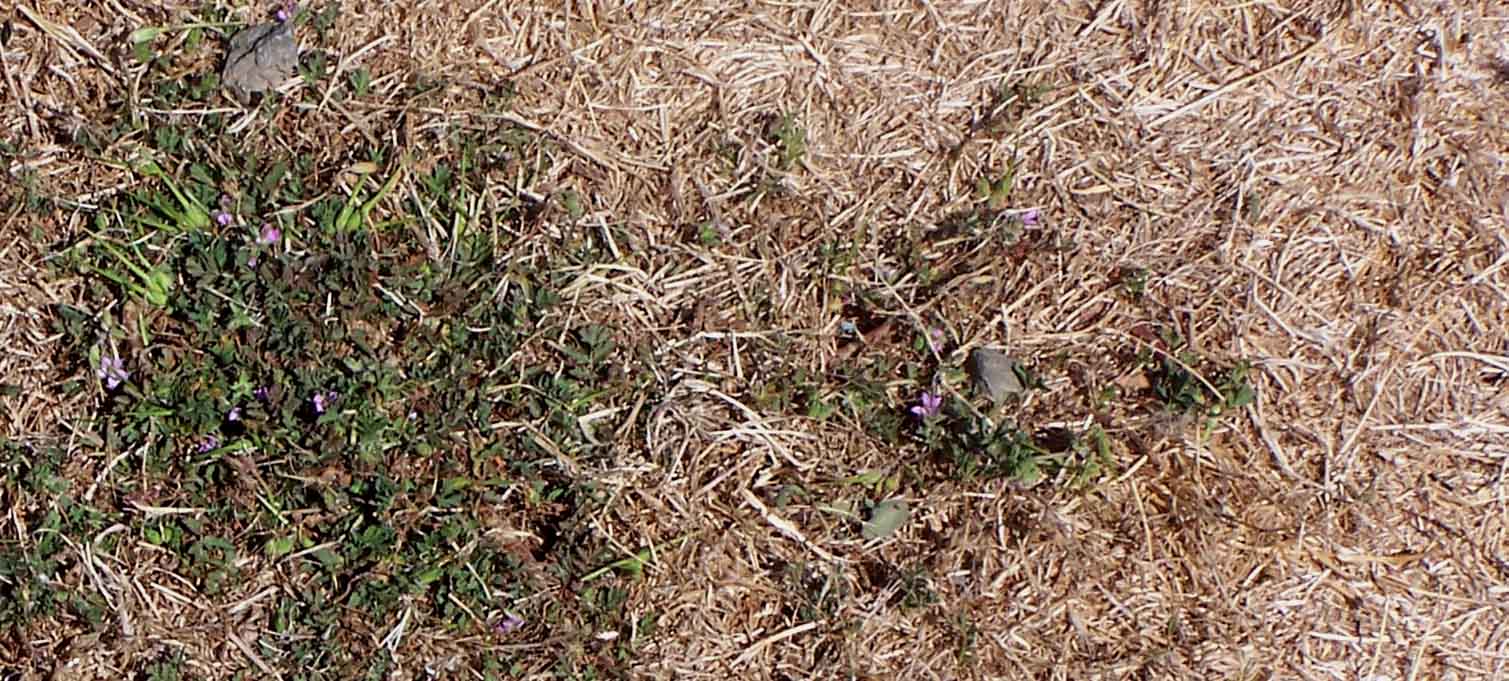It’s still cold and wintery, so let’s imagine ourselves in a happy place…warm, sunny, dry…with dead lawns.

As the photo shows, the turfgrass is dead; this happens every summer during the Pacific Northwest’s droughty summers. Yet many of the weedy species are obviously thriving. Why?
Remember, this is a physiology quiz. You can discount herbicides, fertilizers, etc. This is a cool (no pun intended) adaptation that many species native to dry, subtropical to temperate environments possess. And there are serious implications for water use related directly to this adaptation, or lack thereof.
Let’s see lots of brainstorming on this – no points deducted for trying! (And if you are a true ecophysiology geek, let other people try first before posting the answer.)
ecophysiology geek sounds way more fun than xeric-nursery-dude… I will have to change my business cards…
It is fun! Wear your geekiness proudly!
Well since your picture won’t expand and the true identity of the weed involved can’t be seen a number of quesses will have to suffice.
Mostly I would have to say this is a function of the root system. It could have a tuberous water storing root reaching in to the lower stems or deep penetrating roots to reach water lower down.
Leaf adaptations that dramtically slow water loss is another option. Waxy coatings or hairy leaves can slow water loss. Hairy leaves can collect dew. Silver coloration can reflect the sun to slow water loss, but that does not look to be the case here.
Many weeds, like dandelions, have long, fleshy tap roots that go deep into moist soil, and serve as a kind of reservoir.
Yep…..that is why I now leave the flat weeds to grow in my lawn. Those flat little legumes really green up the place with their nitrogen fixing.